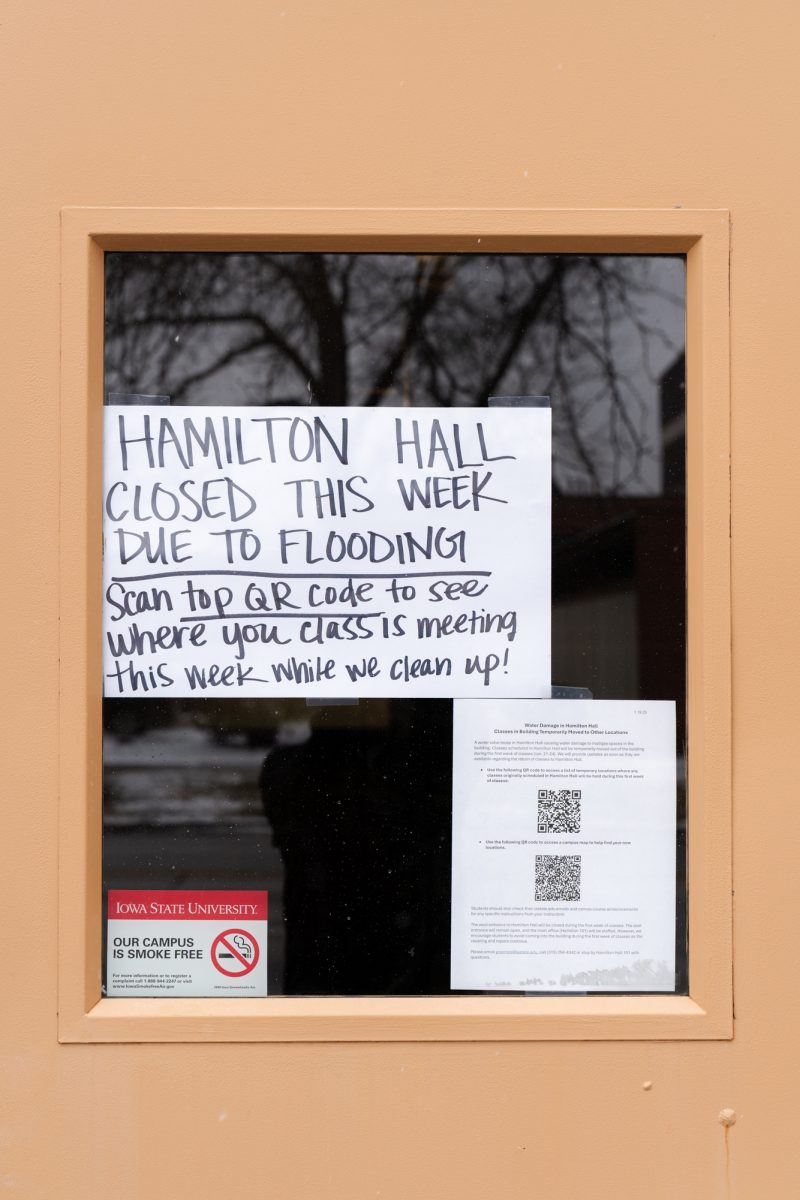Students count on loans, jobs as tuition continues to climb
October 10, 2005
Editor’s note: This is the first of a three-part series examining how state allocation cuts and tuition increases have affected the academic climate and students at Iowa State.
Sheri Fisher said she has adopted a simple method to pay for her education.
“It’s all through loans,” she said.
Fisher, senior in political science, said she works around 20 hours per week at the University Book Store while enrolled full-time at Iowa State to help cover her rent and living expenses, but it isn’t enough to pay for her tuition.
Although her family had saved money for her college education, Fisher, said an unexpected pregnancy in the family consumed her college fund.
She said her student loans reflect her and many students’ inability to accurately forecast skyrocketing tuition costs and life’s unanticipated turns.
“They knew it would go up and stuff,” she said. “That’s why I’m just doing loans; they were just like, ‘We’ll deal with the actual amount later, you just get your education done.'”
“At least we were able to get the loans so I can get my college done.”
Iowa resident tuition rose from more than $3,100 in the 2000-01 school year to more than $5,600 in the 2005-06 year – a nearly 80 percent increase. Out-of-state student tuition has increased by more than 57 percent.
Fall semester undergraduate enrollment has declined, for the third consecutive year, to its lowest level since 1998. Academic departments have simultaneously experienced budget reductions to help ease the funding shortage.
Provost Benjamin Allen said escalated state cutbacks beginning in 2000 forced Iowa State to raise tuition and cut departmental funding.
“The major impact of the tuition increases was the sustainability of our programs,” Allen said. “We were forced into those more than average increases because of state cutbacks. It was a reluctant action, but one that was necessary.”
Faculty Senate members have said the increased cost of education has proven detrimental to the academic climate at Iowa State, but whether the situation will improve is unknown.
Rising costs, reduced enrollment
With soaring tuition costs and fewer high school graduates, Iowa State’s enrollment declined for the third straight year in 2005.
Warren Madden, vice president for business and finance, said lower enrollment translates into a budget crunch.
“From a revenue standpoint, less students are less tuition and fees,” Madden said.
Jack Girton, associate professor of biochemistry, biophysics and molecular biology, said Iowa State has experienced increased costs because of the need to provide new courses, purchase new equipment for research and hire new faculty.
“The question is how do you balance the need for students to have a reasonable tuition and the need for the university to maintain itself,” said Girton, former Faculty Senate president.
University administrators have attributed declining enrollment to lower graduating class sizes from Iowa high schools. According to the Fall 2004 Enrollment Report by the Iowa Board of Regents, the state of Iowa accounts for more than 72 percent of Iowa State’s incoming freshmen.
Although enrollment figures at Iowa’s public universities continue to decline, community colleges have not experienced similar shortcomings.
“Because of the cost of tuition, many students elect to take the first year or two at a community college; that may be shifting our enrollment numbers a bit as well,” said Paul Lasley, professor and chairman of the department of sociology. Lasley said his department has experienced firsthand the effects of budget cuts and tuition increases.
Although fall undergraduate enrollment at Iowa State is nearly 21,000 students, the fifth consecutive year of decline, enrollment at Des Moines Area Community College is more than 16,000 students – its seventh consecutive year of growth.
DMACC President Rob Denson said increasing tuition alongside geographic convenience and a slow economy contributed to his school’s enrollment boom.
“With the economy being tight and gas prices being high, our price is lower than a public or private university,” he said. “I really don’t believe [tuition] has been that much of an issue, but I’m sure it’s been a part.”
As tuition increases, more students are discouraged from earning their degrees at Iowa State, Lasley said.
“As we have shifted responsibility of funding education to the shoulders of parents and students, it has reduced access [to higher education],” he said. “Anything that discourages students from getting a higher education is a loss for society.”
Claudia Baldwin, Faculty Senate president, said increased tuition levels may not follow Iowa State’s founding mission as a land grant institution.
“Increasing tuition is putting more of the burden on the student and the family,” she said. “As a land-grant institution, we would really like to have education available to who wants it.”
In order to help students who are eligible for need-based aid earn a degree, Lasley said departments tried to build the amount of scholarship funds and grants.
“We continue to ask our alumni and friends and working with the foundation to create more scholarships and need-based programs so young people that come from modest backgrounds can get a start,” he said. “It’s not enough to overcome the escalation in cost of education.”






